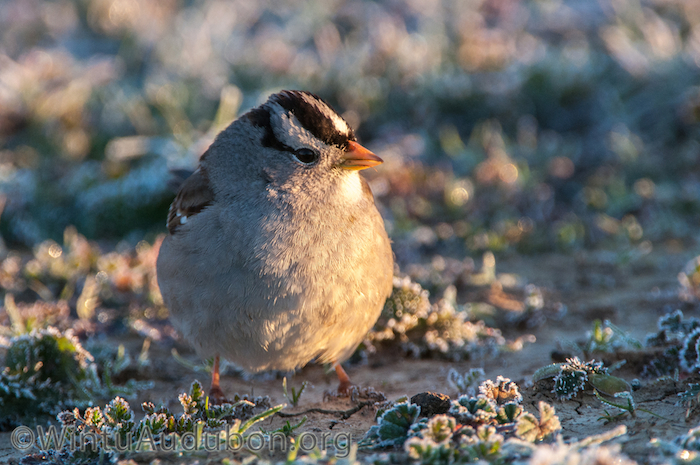
Birds are among the most evident wildlife around the world. They sing, sport a crazy variety of shapes and sizes and live in all sorts of habitats. They’re also often colorful and can be lured into close-up viewing. And they live here.
In Shasta County, we have more than 250 species seasonally every year, plus another 50 species who have made cameo appearances.
One regular visitor that graces our parks and backyards every winter is the diminutive white-crowned sparrow. This ball of feathers, the size of a child’s fist, is perhaps our most common bird of brush and patio. It has a subtle beauty that unmindful people will easily miss.
Its underside is a plain gray and, like most sparrows, its back is a mottled brown. But its bill is egg-yolk yellow and its head is decked out in bold black and white racing stripes.
That yellow beak is short and chunky — good for cracking seeds. These sparrows are eager visitors to bird feeders, where they specialize in eating up grains scattered on the ground. A close-up feeder or a pair of binoculars will allow precise inspection of the black-and-white head, which can reveal where the bird travels to nest in the summer. If the black-line behind the eye continues forward of the eye, that sparrow likely nests in Lassen or the Northern Rockies, from Colorado through Montana and Idaho.
These birds have mostly passed through our area and are now wintering at a resort in Baja. If the black line stops at the eye, these travelers may nest as far north as the high arctic of Canada and Alaska, a journey of as much as 200 miles — no mean feat for little birds that often look like they have to work hard just to cross the yard.
Whether in Redding, Baja or Fairbanks, sparrows are brush birds. White crowns nest within a few feet of the ground, building a soft cup of plant material. As is the case in many species, the female picks the nesting site. She typically lays three to five eggs, and both parents feed the young until they fledge in a week and a half, and then a little longer to get them going.
If you notice a sparrow whose black and white stripes are replaced with reddish-brown and tan, you are looking at a young bird, just hatched last spring. If it can survive through winter, it will fly to its nesting grounds, grow adult feathers, and try its own hand at raising a brood or two before returning to your yard next fall.
Wintu Audubon provides the new BirdWords column. Please send your local bird questions to education@wintuaudubon.org
